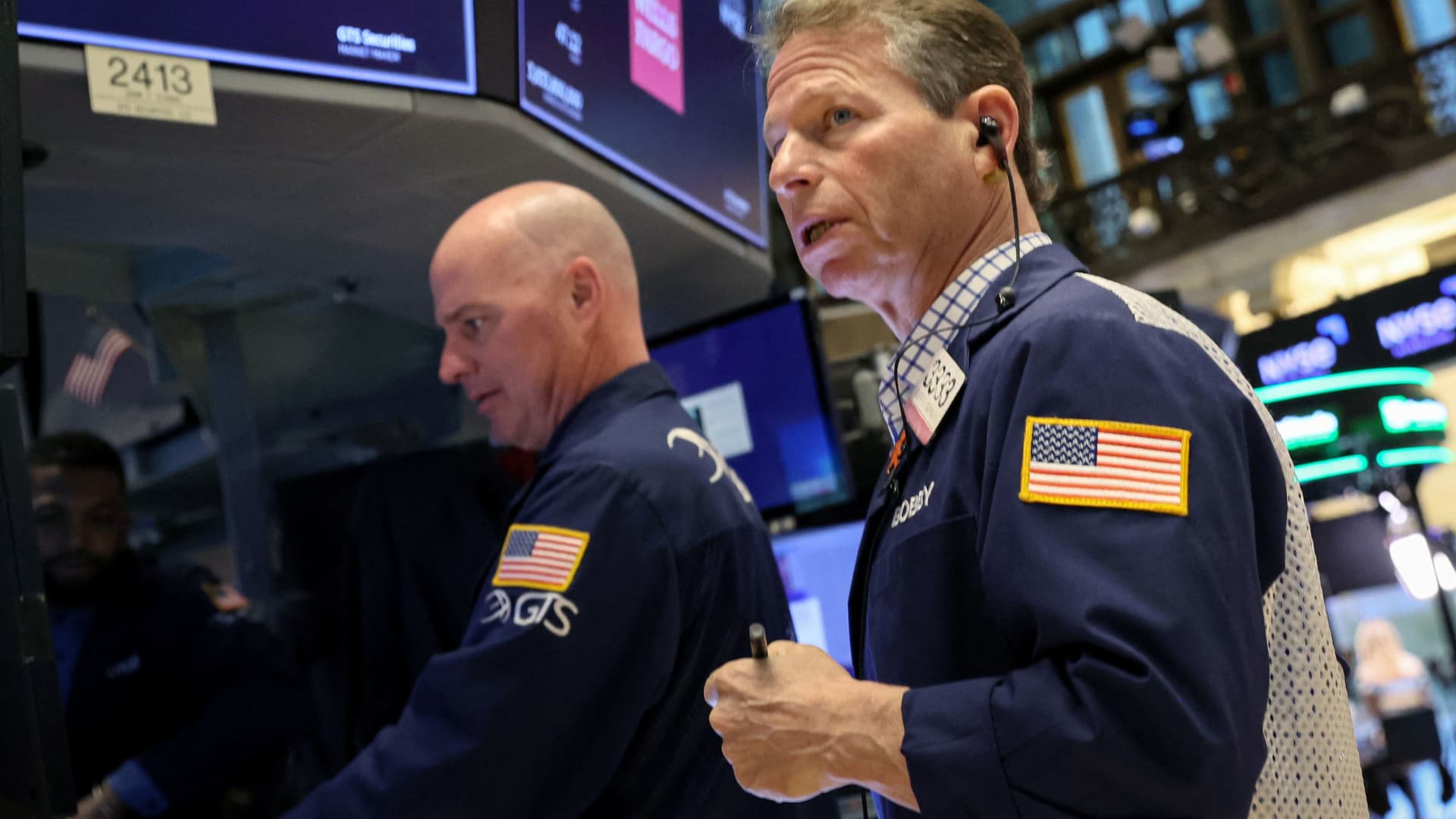Growth of index investing is no threat to market efficiency, study says
4 min read
Traders work on the floor of the New York Stock Exchange (NYSE) in New York City, February 17, 2023.
Brendan McDermid | Reuters
Is the growth of passive investing a threat to the stability of the stock market? A new study says you shouldn’t worry.
There have been several very successful investing trends in the last 30 years. Two examples: the 401(k), and Exchange Traded Funds.
These are all important trends for investors. But even among those successes, the triumph of indexing, or investing in indexes such as the S&P 500, has to rank at or near the top.
“With more than $7 trillion tracking the S&P 500 alone, we estimate that index funds now encompass between a quarter and a third of the capitalization of the U.S. equity market,” Craig Lazzara, managing director at S&P Dow Jones Indices, said in a new study on the impact of passive investing on the market.
More assets, more enemies
No surprise, the largest group of detractors of passive investing is usually active managers.
They have argued that index ownership concentrates into a small handful of firms (BlackRock, Vanguard, State Street, etc.) that can have outsized influence on the markets. Some have argued that because stocks are indexed by market capitalization, passive indexing will push money into the largest firms, regardless of whether the companies are performing well.
Supporters of passive investing dismiss these claims. Tech stocks, for example, were far and away the largest stocks in the S&P 500 at the start of 2022, and indexing did not prevent them from getting clobbered last year.
Active traders still control prices
One argument, however, has attracted some academic interest: that indexing could become so big that there will not be enough “active” trading of stocks and that the markets will therefore become “inefficient.”
If there is any truth to that, where would a peak occur? Are there any signs that we are reaching “peak indexing”?
Lazzara makes an important distinction between passive assets under management and passive trading. While passive assets under management are growing, passive trading is growing very slowly and is only a tiny fraction of overall trading.
In fact, passive managers don’t do much trading. Lazzara demonstrated that, assuming passive managers own a third of all the market’s assets, active managers still do 91% of the trading.
Lazzara’s conclusion: “The valuation of index constituents is ultimately decided by active managers (and some factor indices) whose trades are motivated by their own research.”
Will passive make markets ‘inefficient’?
But what about the other part of the question: could passive investing become so big that it will overwhelm active trading and make the markets “inefficient”?
Remember, Lazzara concluded that active managers still do 91% of the trading. For the share of active manager trades to drop below 50%, Lazzara estimates that passive investors would have to own 83% of all the market’s assets.
That would mean passive managers would have to go from owning roughly 30% of market assets now to 83%.
“And even at that level, there’s no a priori reason to assume that market efficiency would be impaired,” Lazzara said.
In plain English: we are a long way from passive investors controlling trading, if such a level exists.
Still, assuming that if active management becomes less than 50% of trading, the markets may become “inefficient” is just a guess.
Is there a better way to gauge ‘inefficient’?
Lazzara says there is: “Presumably one of the indicia of market inefficiency would be a sufficiently large number of mispriced stocks, so that the value of successful active management would increase.”
In other words, active managers would presumably notice the huge misprice in stocks, would start buying and selling, and then active managers would start outperforming on a consistent basis.
Don’t count on that happening any time soon. S&P’s has been examining the performance of active managers for 25 years through their semi-annual SPIVA study. The results are overwhelming: 90% of all large-cap fund managers underperform their benchmarks over a 10-year period.
“The SPIVA reports show that over the past 20 years active managers are not doing better (as might be the case if markets were becoming less efficient) but if anything are doing worse than the market,” Princeton Professor Burton Malkiel told me. Malkiel has been a proponent of index investing for decades and is author of “A Random Walk Down Wall Street.”
Is this because active managers are stupid? Hardly. In fact, active managers have never been better. It’s just that the vast majority do not have any informational advantages over each other.
Passive investing has had the effect of culling that “herd” of active management even more, Lazzara told me.
“Money moves from the least capable active managers to passive investing,” Lazzara said. “That makes the remaining active managers better.”







